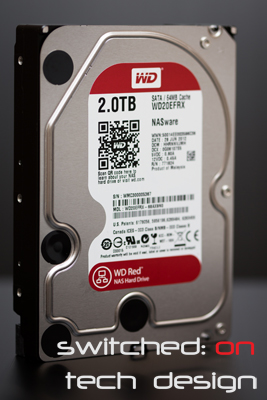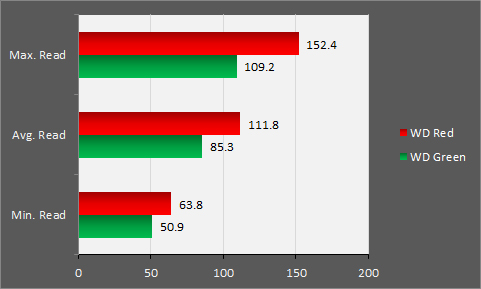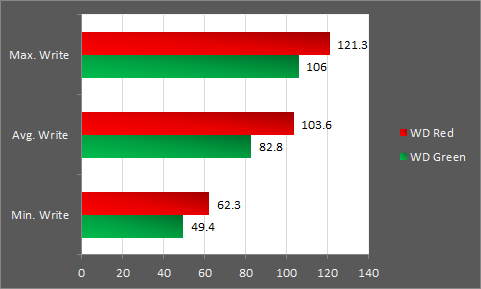As a follow-up to our review (found here), we’ve finally finished testing the new Red drives and compared them to the equivalent Green drives.

We are primarily looking at the sustained read/write performance of these drives, given that they’re marketed at the NAS/server usage pattern – meaning that they’ll largely be used for serving up media files over a network. The drives in question are a new 2TB Western Digital Red (WD20EFRX) and a 2TB Western Digital Green (WD20EARX).
Using HD Tune Pro we get the following results:
Read:

The Red drive leads by a solid margin – the average read speed is 31% higher and the peak read speed is even more in the Red’s favour at 39% higher than the 2TB Green. How about writing?

In terms of real-world performance, even a single Red drive should come close to saturating a gigabit link on average for both reading and writing; a single Green drive doesn’t enjoy the same level of performance but if you were to put both drives in a RAID array through a single gigabit link you would be unlikely to notice the difference. Across a 10GBe link or internally, however, is another matter entirely. The Red line is the first that we’ve seen which we would even consider to term as both “low power” and “performance” – the 150MB/s peak read speed is pushing into Black territory and is extremely respectable for a consumer spinning disk.
If you’re after more performance than the Green line but don’t want the increased cost, power consumption and heat of the Black line the Reds will likely fit the bill – there’s a solid improvement in performance across the board.
Next time we’ll look at the IOPS performance between the two drives and that will conclude our 2TB Red piece… for now.